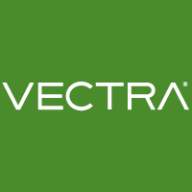

Find out in this report how the two Network Detection and Response (NDR) solutions compare in terms of features, pricing, service and support, easy of deployment, and ROI.


Stellar Cyber’s AI-driven Security Operations Platform powered by Open XDR delivers comprehensive, unified security without complexity, empowering lean security teams of any skill to secure their environments successfully. With Stellar Cyber, Enterprises, MSSPs and MSPs reduce risk with early and precise identification and remediation of threats while slashing costs, retaining investments in existing tools, and improving analyst productivity, delivering a 20X improvement in MTTD and an 8X improvement in MTTR.
What are the standout features?
What benefits should users look for?
Stellar Cyber Open XDR is especially beneficial in industries that demand state-of-the-art cybersecurity measures, such as finance, healthcare, and retail. Users in these sectors rely on it for its comprehensive data integration, real-time threat detection, and seamless tool compatibility, enabling them to maintain high-security standards while dealing with sensitive information.
Vectra AI is used for detecting network anomalies and potential malicious activities, providing visibility into network traffic and enhancing threat detection across environments.
Organizations deploy Vectra AI mainly on-premises with additional cloud components. It helps with compliance, incident response, security monitoring, detecting insider threats, and correlating network events. Vectra AI captures and enriches network metadata, provides detailed dashboards, reduces false positives, and supports cross-environment behavioral analysis to enhance threat detection and prioritization. While valued for its high accuracy and alert aggregation, it has room for improvement in UI/UX, packet management, and integration with SIEMs and other tools. It is noted for expensive pricing and limited proactive threat response features.
What are Vectra AI's most valuable features?In specific industries, Vectra AI is deployed to monitor complex networks and alleviate challenges in threat detection. It is particularly effective in sectors requiring stringent compliance and security measures, offering insights and capabilities crucial for protecting sensitive data and maintaining operational integrity.
We monitor all Network Detection and Response (NDR) reviews to prevent fraudulent reviews and keep review quality high. We do not post reviews by company employees or direct competitors. We validate each review for authenticity via cross-reference with LinkedIn, and personal follow-up with the reviewer when necessary.